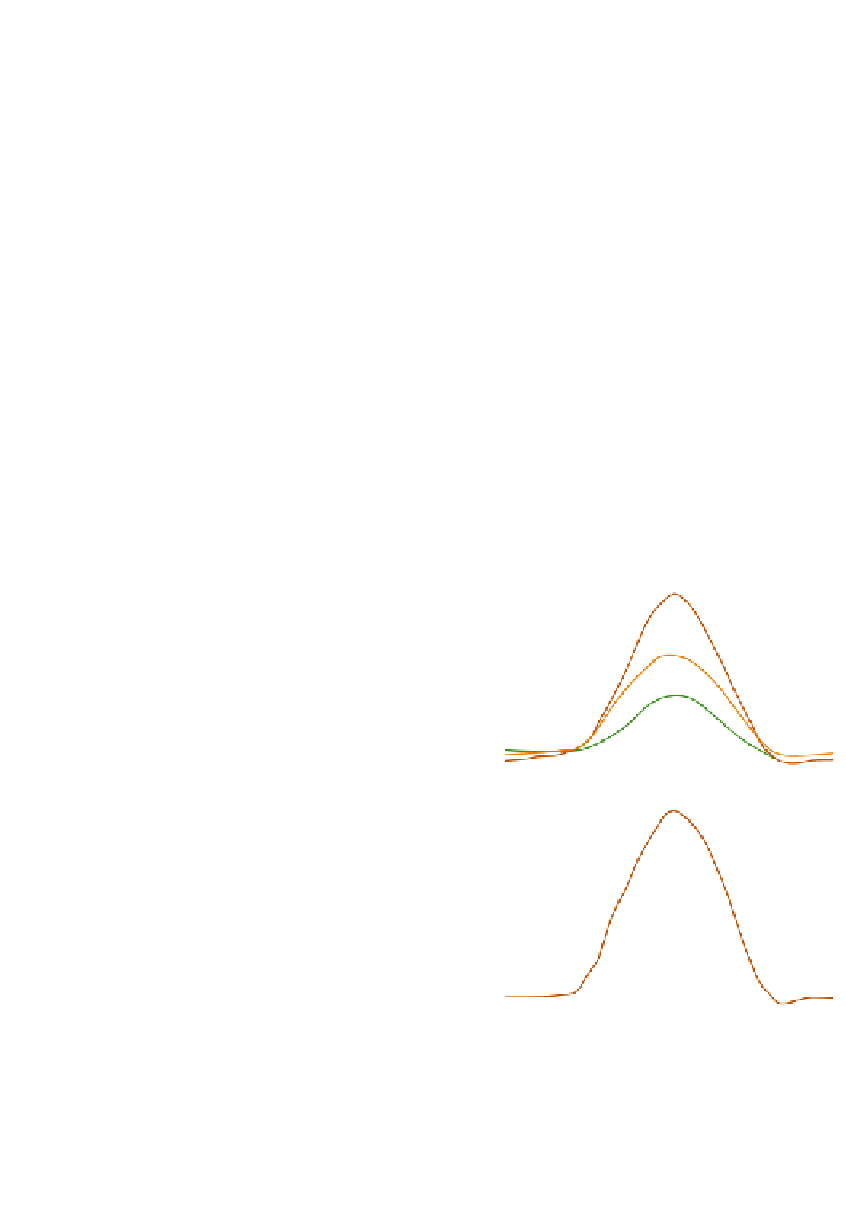Geoscience Reference
In-Depth Information
above the urban canopy of the building tops filled
by buoyant mixing circulations. When an inver-
sion lid prevents upward dispersion, but lapse
conditions due to morning heating of the surface
air allow convective plumes and associated
downdrafts to bring pollution back to the surface,
this process is termed
fumigation
. Downwind,
lofting
occurs above the temperature inversion at
the top of the rural boundary layer, dispersing the
pollution upward.
Figure 12.23C
illustrates some
features of a pollution plume up to 160km
downwind of St Louis on 18 July 1975. In view of
the complexity of photochemical reactions, it is of
note that ozone increases downwind due to
photochemical reactions within the plume, but
decreases over power plants as a result of other
reactions with the emissions. This plume was
observed to stretch for a total distance of 240km,
but under conditions of an intense pollution
source, steady large-scale surface airflow and
vertical atmospheric stability, pollution plumes
may extend downwind for hundreds of kilo-
meters. Plumes originating in the Chicago-Gary
conurbation have been observed from high-flying
aircraft to extend almost to Washington, DC,
950km away.
The impacts of air pollution include: direct
meteorological effects (on radiative transfer,
sunshine, visibility, fog and cloud development),
greenhouse gas production (by release of CO
2
,
CH
4
, NO
x
CFCs and HFCs), photochemical
effects (tropospheric ozone formation), acidifica-
tion (processes involving SO
2
, NO
x
, and NH
3
),
and societal nuisance (dust, odor, smog) affecting
health and the quality of life, especially in urban
areas.
m
-2
during winter and 15W m
-2
during summer.
Although
Rn
may not be greatly different from
that in nearby rural areas (except during times of
significant pollution) heat storage by surfaces is
greater (20-30 percent of
Rn
by day), leading to
greater nocturnal values of
H
;
LE
is much less
in city centers. After long, dry periods, evapo-
transpiration may be zero in city centers, except
for certain industrial operations, and in the case
of irrigated parks and gardens, where
LE
may
exceed
Rn
. This lack of
LE
means that by day
70-80 percent of
Rn
may be transferred to the
atmosphere as sensible heat (
H
). Beneath the
urban canopy, the effects of elevation and aspect
on the energy balance, which may vary strikingly
even within one street, determine the micro-
climates of the streets and 'urban canyons'.
The complex nature of the urban modification
of the heat budget is demonstrated by observa-
tions made in and around the city of Vancouver.
Figure 12.24
compares the summer diurnal energy
600
(
A)
R
n
400
LE
H
200
Δ
S
0
-100
600
(
B)
R
n
400
H
200
LE
Δ
S
0
2
Modification of the heat budget
-200
The energy balance of the built surface is similar
to soil surfaces described earlier, except for the
heat production resulting from energy consum-
ption by combustion, which in some cities may
even exceed
Rn
during the winter. Values in
Toulouse, France are reported to be around 70W
00
04
08
12
Hour
16
20
24
Figure 12.24
Average diurnal energy balances
for (A) rural and (B) suburban locations in Greater
Vancouver for 30 summer days.
Source: After Clough and Oke, from Oke (1988). By
permission of T. R. Oke.
















































